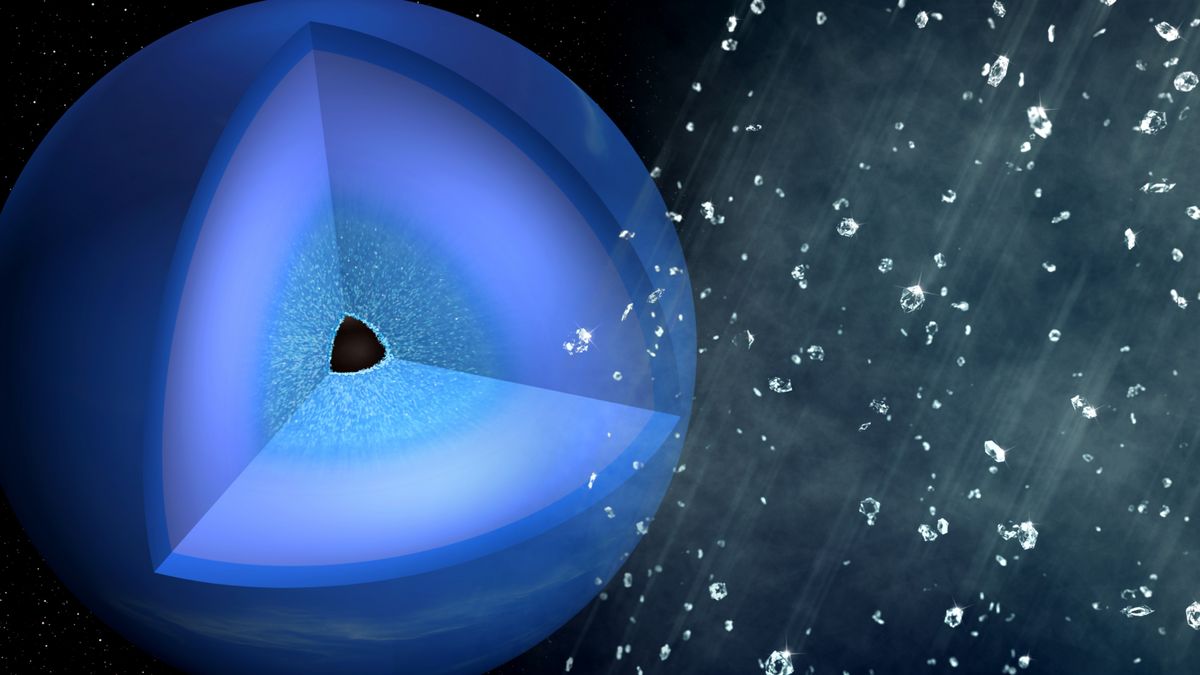
The reasoning was pretty simple: We know what Uranus and Neptune are made of, and we know that stuff gets hotter and denser the deeper into a planet you go.
The mathematical modeling helps fill in the details, like that the innermost regions of the mantles of these planets likely have temperatures somewhere around 7,000 kelvins (12,140 degrees Fahrenheit, or 6,727 degrees Celsius) and pressures 6 million times that of Earth's atmosphere.
- Icy Planets' Diamond Rain Created in Laser Laboratory.That won't be an option anytime soon, so we have to go with the second-best way: laboratory experiments.
No, Uranus and Neptune don't contain vast quantities of polystyrene, but the plastic was much easier than methane to handle in the laboratory and, presumably, behaves very similarly.
Also, Uranus and Neptune can keep up those pressures for a lot longer than a laboratory laser, so the diamonds could presumably grow to be a lot larger than nano-sized.Based on everything we know about the composition of the ice giants, their internal structures, results from laboratory experiments and our mathematical modeling, diamond rain is a very real thing.
